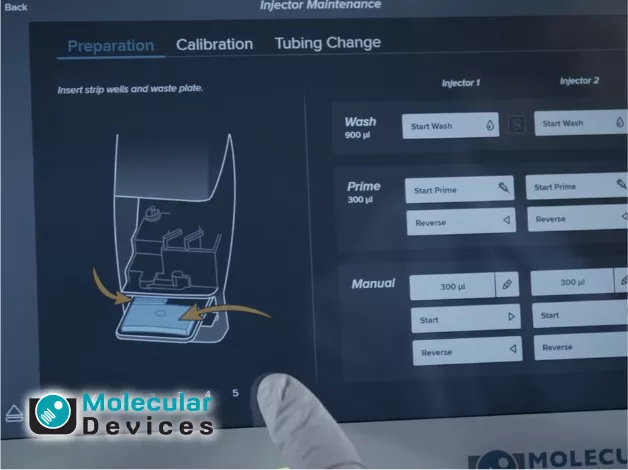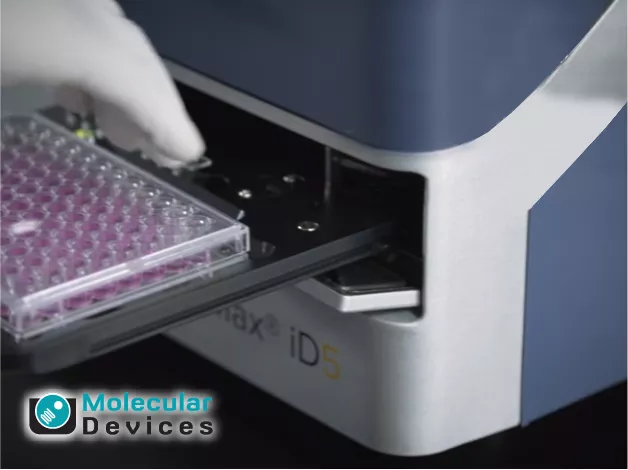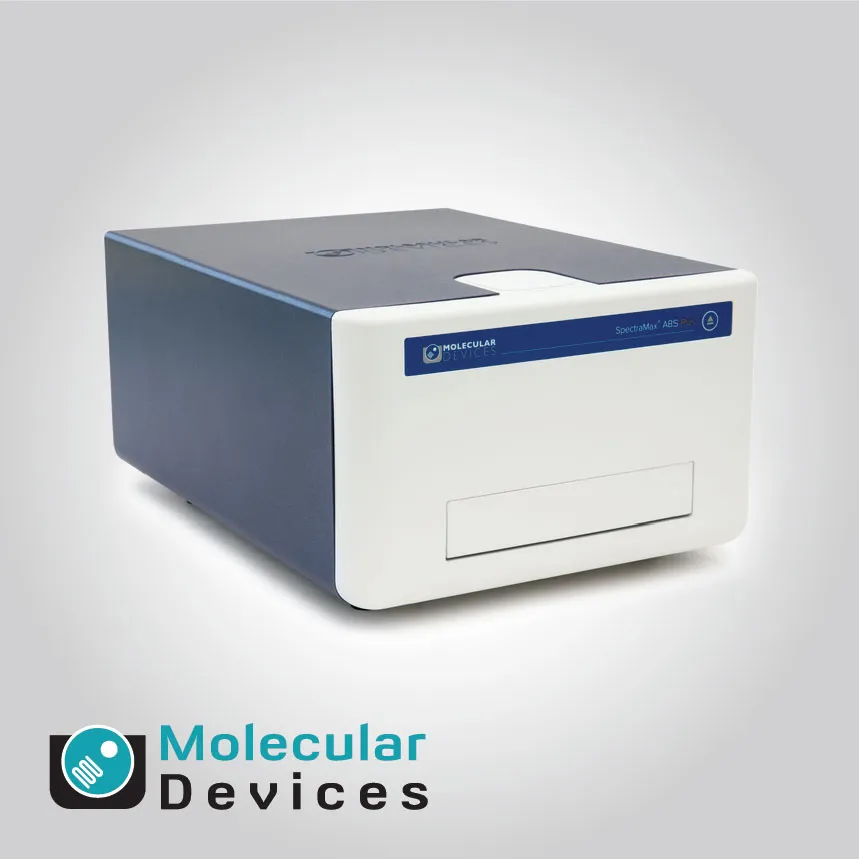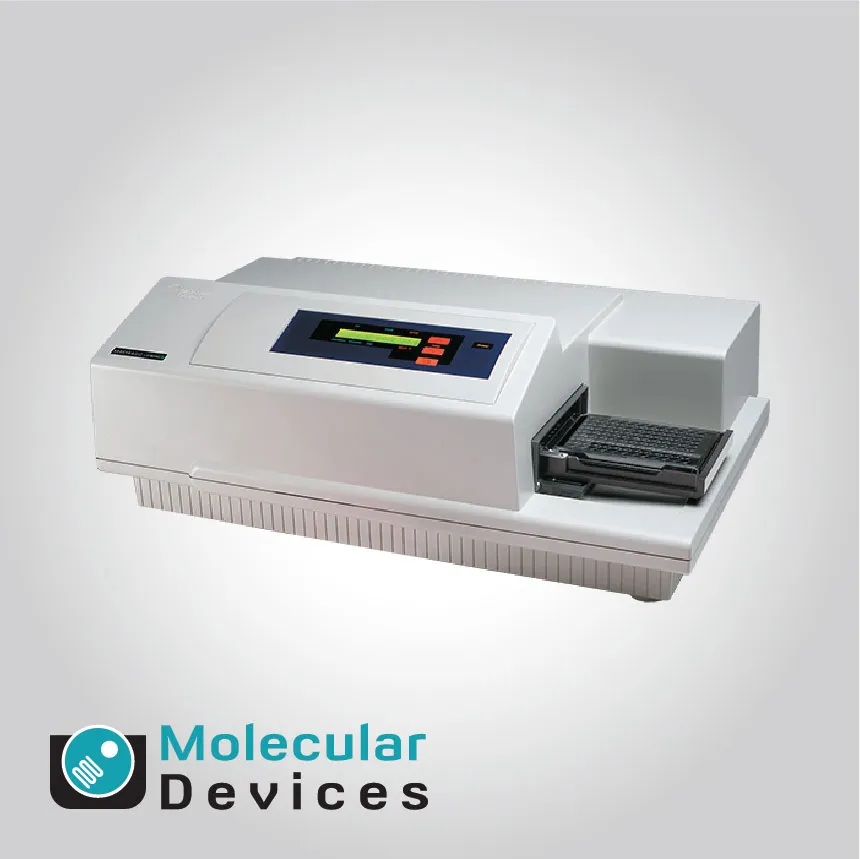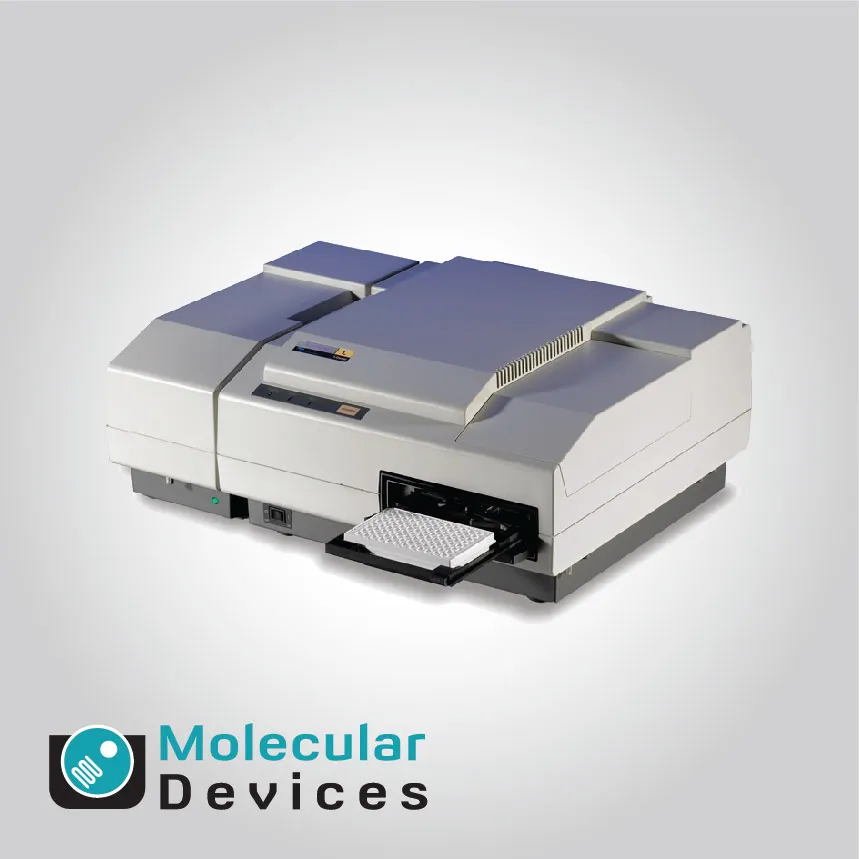
Home » Products » Microscopy & Imaging Systems » Microscopes & Optics » Molecular Devices Multi-mode Microplate Readers
Multi-mode Microplate Readers
SpectraMax iD5
Molecular Devices Multi-mode Microplate Readers
Multi-mode readers combine multiple detection technologies in a single platform, allowing for simultaneous or sequential measurement of absorbance, fluorescence, and luminescence. This versatility reduces the need for multiple instruments and simplifies workflow in laboratories with diverse assay requirements. Researchers benefit from rapid data acquisition, high sensitivity, and low crosstalk between wells, enabling confident analysis across a wide range of experimental conditions.
Optimized optical systems and sensitive detectors ensure reproducible results with minimal background interference. Whether measuring enzymatic reactions, cellular responses, or reporter gene activity, multi-mode readers provide high-quality data across all detection modes. Integrated software allows researchers to configure kinetic or endpoint assays, visualize results, and analyze data efficiently, supporting both small-scale experiments and high-throughput screening campaigns.
Advanced Multi-Detection Capabilities
Multi-mode microplate readers combine absorbance, fluorescence, and luminescence detection in a single platform, offering unmatched versatility for modern laboratories. This integration allows scientists to perform diverse assays without switching instruments, reducing workflow complexity and increasing efficiency. The capability to handle multiple assay types, including enzyme kinetics, reporter gene assays, and cellular viability studies, provides researchers with a flexible and scalable solution suitable for both routine and high-throughput experiments.
High Sensitivity Across Multiple Modes
Optimized optical systems and sensitive detectors enable the reliable detection of very low-intensity signals across all modes. This high sensitivity is crucial for quantifying low-abundance biomolecules, subtle cellular responses, or faint luminescent signals. Reduced background noise and enhanced signal-to-noise ratios ensure that even the smallest variations in assay results are captured accurately, supporting reproducible and meaningful experimental outcomes.
Wide Dynamic Range for Accurate Quantification
Multi-mode readers offer a wide dynamic range, maintaining linearity across low and high signal intensities. This allows accurate quantification without the need for repeated dilutions or multiple experiments, reducing sample consumption and improving laboratory efficiency. The wide dynamic range is particularly advantageous for high-throughput screening, enabling consistent measurements of both strongly and weakly emitting samples in the same experiment.
High-Throughput Screening Capabilities
These instruments are optimized for high-throughput applications, allowing rapid data acquisition across multiple plates. Automation compatibility enables seamless integration with robotic systems, supporting large-scale compound screening, gene expression studies, and cellular assays. Fast read times and low well-to-well crosstalk ensure accurate results even under demanding screening conditions, enhancing laboratory productivity.
Kinetic and Endpoint Measurement Flexibility
Multi-mode microplate readers support both kinetic and endpoint assays, enabling real-time monitoring of reactions as well as measurements at specific time points. Kinetic assays are essential for studying dynamic biological processes, enzyme activities, and cellular responses, while endpoint assays provide rapid, high-throughput data for comparative analysis. This dual capability ensures that a single instrument can accommodate a wide range of experimental designs.
Low Crosstalk for Accurate Well-to-Well Readings
Advanced optical design minimizes well-to-well crosstalk, ensuring that signals are precisely attributed to individual wells. This is especially important in multiplexed assays, cell viability studies, and reporter gene experiments, where accuracy and reproducibility are critical. Low crosstalk improves confidence in data interpretation and reduces variability between wells and plates.
Optimized Optical and Detection Systems
High-performance optics and sensitive photodetectors enhance signal capture while reducing background noise. Uniform illumination across the plate ensures consistent measurements and high reproducibility across different wells and plates. This precision is critical for biochemical, cell-based, and multi-parameter assays that require high data fidelity.
Integrated Software for Data Analysis and Workflow Efficiency
Integrated software simplifies experiment setup, data acquisition, and analysis. Users can configure read parameters, apply kinetic or endpoint protocols, visualize results, and export data for downstream analysis. This integration streamlines workflow, enhances reproducibility, and allows researchers to confidently interpret assay results, whether for routine laboratory testing or high-throughput screening campaigns.
Read More About Molecular Devices Products Here







